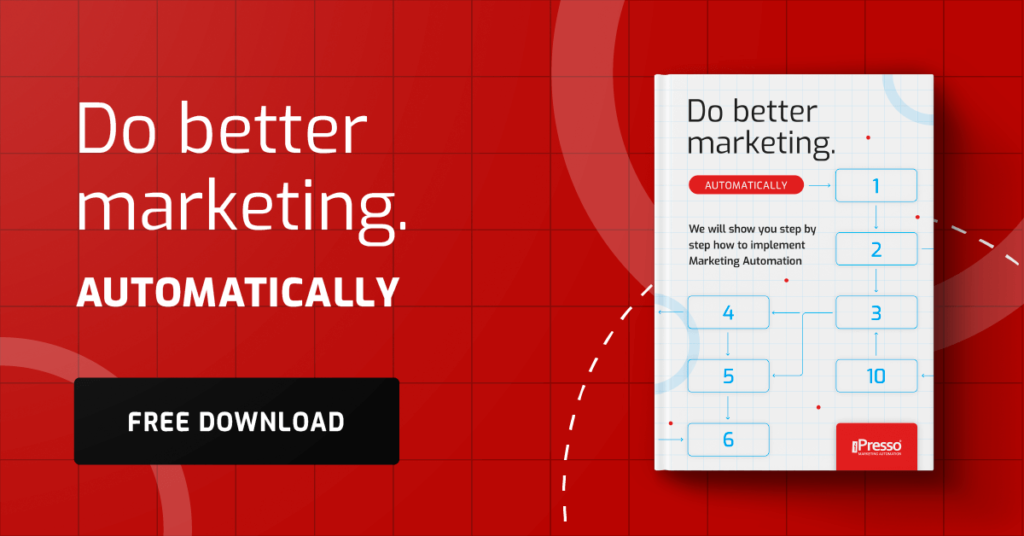Most financial companies only sell. See how to educate on a large scale to make customers want to buy from you themselves

Many companies in the financial industry act like a pushy salesman in a bazaar – they shout, waving another “revolutionary” offer in front of the customer’s nose. Meanwhile, the recipient stands dazed, not understanding the difference between a mutual fund and an office coffee fund. To change this circus into a real theater of trust, it makes sense to bet on education on a large scale. By providing knowledge that actually helps (not just sounds smart), you build more lasting relationships. We’ll tell you how to use Marketing Automation to create educational sequences that don’t put customers to sleep in the first sentence.
70% of customers don’t use your services for this reason
It used to be that bankers wore suits and ties and talked about bond annuities over coffee. Today? They sit in front of their computers and figure out how to keep their client awake while reading the next email about an “attractive investment offer.” The financial industry is going through a small revolution right now. According to Ernst & Young’s Global Consumer Banking Survey (yes, those are the same people who count other people’s money), as much as 70% of purchasing decisions depend on how customers are treated. And at the same time, just a 5% increase in retention can translate into a 25-100% increase in profit. What does this mean in practice? That instead of sending everyone the same email about a “revolutionary fund,” it’s worth checking first if the recipient even knows the difference between a fund and a savings account.
Your investment clients are not a homogeneous mass of people in suits. They’re a whole range of personalities: from “I’ll take anything” to “I’ll analyze it for six months.” One wants the basics, another wants advanced technical analysis. And a third simply wants to know if his money is safe.
Automation makes money for you, and you relax
Remember the days when personalization meant inserting a name in the header of an email? “Dear Mark, we have an offer for you!” – while Marek’s name is actually Marcin and he is fed up with these “special” offers. There were also similar slips when the recipient simply received a message like, “Hello {insert name}! Thank you for registering.”
Today’s marketing automation is not just name personalization. It’s a comprehensive system that analyzes customer behavior and knows that if a customer has been reading about ETFs for a week, he probably isn’t interested in a mortgage right now. With Marketing Automation you integrate all communication channels such as email, SMS, push notifications. It’s like having an assistant who remembers everything – only it doesn’t take a break from work, doesn’t sleep, doesn’t take a vacation and never has a bad day. It helps you even when you are busy with something else entirely.
How to educate customers in an interesting way
Imagine coming to a cooking course, and the chef immediately starts with a soufflé. That’s how customers feel when they get an advanced market analysis, but don’t yet know the difference between an action and a bond. Successful educational sequences should deliver content in such a way that the customer can’t wait for the next one. Automation allows you to create different educational paths that activate based on customer behavior. A user keeps clicking on links about stocks? He’ll get a series on fundamental analysis. Interested in cryptocurrencies? He’ll get education about digital assets. The best part of all? The system decides for itself when a customer is ready for the next level of advancement.
Don’t lose leads and sell more
In the financial industry, where customers are making decisions about their life savings, haste is the last thing you need. It’s not “buy now because it will be more expensive tomorrow.” Rather, it’s “here’s an interesting article about portfolio diversification, read it when you have time, and we’ll send you practical tips in a week.”
Effective nurturing in finance is:
- Behavioral segmentation – grouping customers not by age or location, but by how they behave. Do they read all emails, or just open them? Do they click on links about stocks, or do they prefer bonds?
- Personalize content – everyone gets content tailored to their risk profile and goals. A conservative investor won’t get information about technology stocks, and a young wolf on Wall Street won’t be bombarded with ads for deposits.
- Automatic responses – the client shows interest in ETFs? The system responds in real time, for example, by sending a personalized invitation to a webinar on index funds.
- Multichannel – communication through different channels, but with a head. Not everyone wants to get text messages about investments at 5am.
Want to see practical examples of how Marketing Automation can be used in the financial industry? Read our case studies.
Earn customer trust and ensure data security
In the financial industry, trust is the foundation on which everything is built. Customers entrust you with their savings, their retirement plans, their dreams of owning their own home. One mistake with data protection and the customer flees to the competition, and you have the problem of repairing your reputation. Automation systems for the financial industry must meet the highest security standards. When you choose iPresso, you are assured that data protection is in accordance with ISO 9001 and ISO 27001 standards. These are not random acronyms – they are a guarantee that your customers’ data is safer than a safe in a bank. Transparency in communication is another element. Recipients need to know why they are getting certain content, how their information is being used, and have full control over their preferences. Always include a button in emails with educational content for people who want to unsubscribe from receiving marketing messages.
How to serve millions of customers without losing your mind
Large financial companies have a problem that sounds like a mathematical conundrum: what content to send out to a base with millions of users? The traditional approach: “We’ll send everyone the same email, and let whoever wants to read it.” Effectiveness? Comparable to advertising ice cream in the middle of winter.
Imagine the situation: John, 65, a retiree, gets an email about an “aggressive investment strategy in technology startups.” Next to him, Anna, 25, a programmer, receives the same message – but she happens to be looking for a way to secure her retirement in 40 years. They both click “delete” at the speed of light. The result? Your beautifully crafted campaign lands in the trash along with ads for miracle diets and offers to take a loan. The customer feels like he’s in a store where the salesperson is trying to sell him wellingtons, while he came for running shoes.
Marketing Automation systems are prepared to work with big data, dynamically change the content of messages based on segmentation, and recommend financial services tailored to a specific person.
Your plan to implement an educational campaign in 6 steps:
Step 1: Understand the customer
Forget dry demographics. Truly understanding your customer starts with analyzing their behavior, habits and financial goals. Find out if he actively manages his budget, or if he panics before every weekend, not knowing how much he has in his bank account.
Step 2: Speak the language of a person, not a bank
Content should not sound like bank regulations. Eliminate financial jargon and focus on simplicity and practical examples. If your text includes a sentence like “In the context of optimizing your investment portfolio…”, know that you need to correct it.
Step 3: Automate campaigns
Create scenarios that work for you: a welcome email for a new customer, a gentle reminder for one who hasn’t logged in for a month, and an offer for someone who just checked a credit calculator.
Step 4: Choose a communication channel tailored to the customer
People have different preferences – some like emails, others SMS, WhatsApp or push notifications. Choose multi-channel communication tailored to the customer.
Step 5: Test and optimize
Don’t guess what works – test it! Continuous testing is key to campaign optimization. Whether “Get More” or “Invest Wisely” – the answer lies in the data, not in guesswork. Conduct A/B testing of content, CTAs, and even colors or message layout.
Step 6: Measure metrics
Starting an interaction via email is just the beginning. True success depends on conversions, customer lifetime value, long-term engagement and retention. Monitor these metrics to predict which users are likely to leave, and use marketing automation to retain them.
Summary
Instead of bombarding everyone with the same boring emails about “revolutionary funds,” it makes sense to bet on intelligent personalization and education. Properly designed education and nurturing sequences can turn a casual visitor into a loyal customer. And a loyal customer in the financial industry isn’t just revenue – it’s also the best brand ambassador who will recommend services to family and friends.
Want to turn chaotic sales into strategic customer education? Contact us, build lasting relationships and increase conversions in your financial business.



